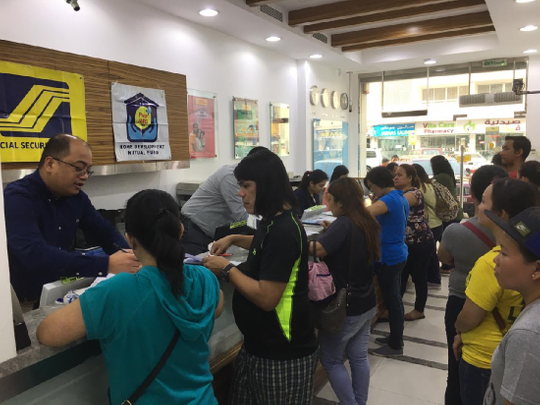
Dubai: Filipino expatriates working in UAE have helped push up remittances to the Philippines, which jumped by approximately half a billion dollars in seven months.
From January to July this year, Filipinos overseas sent home a total of $16.6 billion (Dh60 billion) in cash coursed through banks, rising by three per cent or $498 million from the same period in 2017, the Bangko Sentral ng Pilipinas (BSP) announced on Monday.
That’s roughly Dh8.5 billion cash landing in the pockets of migrant workers’ families and expats' bank accounts back home every month. In local currency terms, that's a staggering 128 billion pesos entering the Philippine economy every 30 days.
The bulk of the funds remitted during the first seven months of 2018, estimated to be more than $13 billion (Dh47 billion), came from the UAE, as well as other major expatriate destinations, including Saudi Arabia, Singapore, Japan, United Kingdom, Qatar, Canada, Germany, Hong Kong and United States.
The Philippine currency’s continued decline against the US dollar, to which the UAE dirham is pegged, has contributed to the rise in remittances.
In the last quarter of 2017 alone, when the Philippine peso fell against the US dollar by 3.6 per cent, remittances to the Philippines from the UAE went up by 9.9 per cent, according to the UAE Central Bank.
“We have seen a steady increase in the number of remittances to the Philippines these past few years and expect it to grow over the coming years as well,” Adeeb Ahamed, MD, LuLu Financial Group, said in June.
As of July this year, total personal remittances of Filipinos overseas reached $2.7 billion, higher by 4.5 per cent compared to the same period in 2017. On a cumulative basis, personal remittances from January to July grew by 3 per cent year-on-year to $18.5 billion.
The rise in money transfers during the first seven months of the year was due to an increase in remittance inflows from land-based workers with work contracts of one year or more, up by 2.8 per cent, and sea-based workers and land-based workers with short-term contracts, according to BSP governor Nestor Espenilla Jr.
There are approximately 10 million Filipinos working in various countries around the world. The majority of these expats send home a portion of their earnings, which serve as the source of sustenance for dependent families.
Filipino overseas workers at the Manila international airport.
The UAE is one of the most popular destinations for Filipinos. In a recent survey, it was found that out of the 2.3 million Filipinos who entered work contracts between April and September 2017, the majority were based in Saudi Arabia (25.4 per cent), followed by other countries in Asia (20.8 per cent), UAE (15.3 per cent) and Kuwait (6.7 per cent).
One in every three (37.6 per cent) Filipinos working overseas are in “elementary occupations,” according to the survey by the Philippine Statistics Authority (PSA).
Around 18 per cent work as service and sales workers, while 13.7 per cent work as plant and machine operators and assemblers.
A smaller number, around 11 per cent, are employed in craft and related industries.








